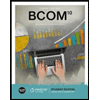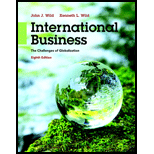
To think critically about:
The influence of product convergence on the marketing manager’s job
Introduction:
Convergence is bringing together two different entities with the advanced computing and technology. The product moving to convergence integrates a distinct product which can provide far greater value than the individual product can deliver independently.
Answer to Problem 1TAI1
Solution:
There is a great influence on marketing managers’ job as he has to know the customer lifecycle from awareness to engagement and purchase, to retain and advocacy
Explanation of Solution
All organizations need manpower for meeting their goals. In the marketing of product the role of the marketing manager is crucial. The marketing manager has to ensure efficient functioning of the product.
Convergence product can provide a multi-purpose range of functions to the customers which will not require being in depth of products which are of a single purpose.
The marketing manager is in the new digital age where they have an opportunity to make a serious impact on how and how well they can attract and retain the customers of the organization. They should learn the language of growth and take their place at the leadership table. They must also have the knowledge of the company’s customers.
The marketing manager must be well conversant with the requirement for developing, nurturing and maintaining customer relationships and build their knowledge in their planning.
Hence the marketing manager has to understand the mechanics and economics of their organization and try to view the decisions through the eyes of customers they serve.
Want to see more full solutions like this?
Chapter 14 Solutions
International Business: The Challenges of Globalization (8th Edition)
- Moose Enterprises finds it is necessary to determine its marginal cost of capital. Moose’s current capital structure calls for 50 percent debt, 30 percent preferred stock, and 20 percent common equity. Initially, common equity will be in the form of retained earnings (Ke) and then new common stock (Kn). The costs of the various sources of financing are as follows: debt, 9.6 percent; preferred stock, 9 percent; retained earnings, 10 percent; and new common stock, 11.2 percent. a. What is the initial weighted average cost of capital? (Include debt, preferred stock, and common equity in the form of retained earnings, Ke.) b. If the firm has $18 million in retained earnings, at what size capital structure will the firm run out of retained earnings? c. What will the marginal cost of capital be immediately after that point? (Equity will remain at 20 percent of the capital structure, but will all be in the form of new common stock, Kn.) d. The 9.6 percent cost of debt referred to earlier…arrow_forwardWhat was the direct labor cost?arrow_forwardWhat are the estimated cash receiptsarrow_forward
- What was the cash balance on November 1 ?arrow_forward7. Berkeley Farms wants to determine the minimum cost of capital point for the firm. Assume it is considering the following financial plans: Cost (aftertax) Weights Plan A Debt .................................. 4.0% 30% Preferred stock .................. 8.0 15 Common equity ................. 12.0 55 Plan B Debt .................................. 4.5% 40% Preferred stock .................. 8.5 15 Common equity ................. 13.0 45 Plan C Debt .................................. 5.0% 45% Preferred stock .................. 18.7 15 Common equity ................. 12.8 40 Plan D Debt .................................. 12.0% 50% Preferred stock .................. 19.2 15 Common equity ................. 14.5 35 a. Which of the four plans has the lowest weighted average cost of capital? Use the Kd (cost of debt) = Y(1 - T), Kp (Cost of preferred stock) = Dp/Pp - F, Ke = D1/P0 + g formulas or I will not understand.arrow_forwardCompute the net incremental cost or savings of buying thearrow_forward
- Need use the Kd (cost of debt) = Y(1 - T), Kp (Cost of preferred stock) = Dp/Pp - F, Ke = D1/P0 + g formulas or I will not understand. Delta Corporation has the following capital structure: Cost Weighted (after-tax) Weights Cost Debt 8.1% 35% 2.84% Preferred stock (Kp) 9.6 5 .48 Common equity (Ke) (retained earnings) 10.1 60 6.06 Weighted average cost of capital (Ka) 9.38% a. If the firm has $18…arrow_forwardCalculate the budgeted balance of accounts payablearrow_forwardPlease give me correct answer this financial accounting questionarrow_forward
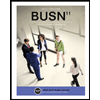 BUSN 11 Introduction to Business Student EditionBusinessISBN:9781337407137Author:KellyPublisher:Cengage Learning
BUSN 11 Introduction to Business Student EditionBusinessISBN:9781337407137Author:KellyPublisher:Cengage Learning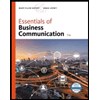 Essentials of Business Communication (MindTap Cou...BusinessISBN:9781337386494Author:Mary Ellen Guffey, Dana LoewyPublisher:Cengage Learning
Essentials of Business Communication (MindTap Cou...BusinessISBN:9781337386494Author:Mary Ellen Guffey, Dana LoewyPublisher:Cengage Learning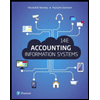 Accounting Information Systems (14th Edition)BusinessISBN:9780134474021Author:Marshall B. Romney, Paul J. SteinbartPublisher:PEARSON
Accounting Information Systems (14th Edition)BusinessISBN:9780134474021Author:Marshall B. Romney, Paul J. SteinbartPublisher:PEARSON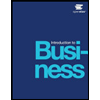
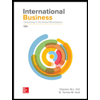 International Business: Competing in the Global M...BusinessISBN:9781259929441Author:Charles W. L. Hill Dr, G. Tomas M. HultPublisher:McGraw-Hill Education
International Business: Competing in the Global M...BusinessISBN:9781259929441Author:Charles W. L. Hill Dr, G. Tomas M. HultPublisher:McGraw-Hill Education